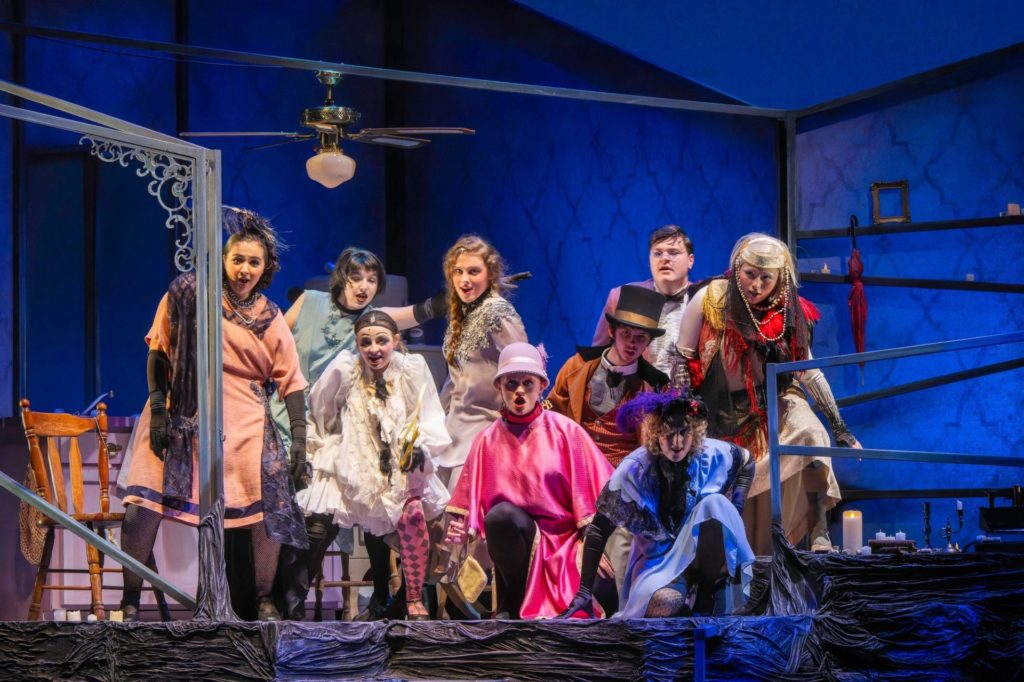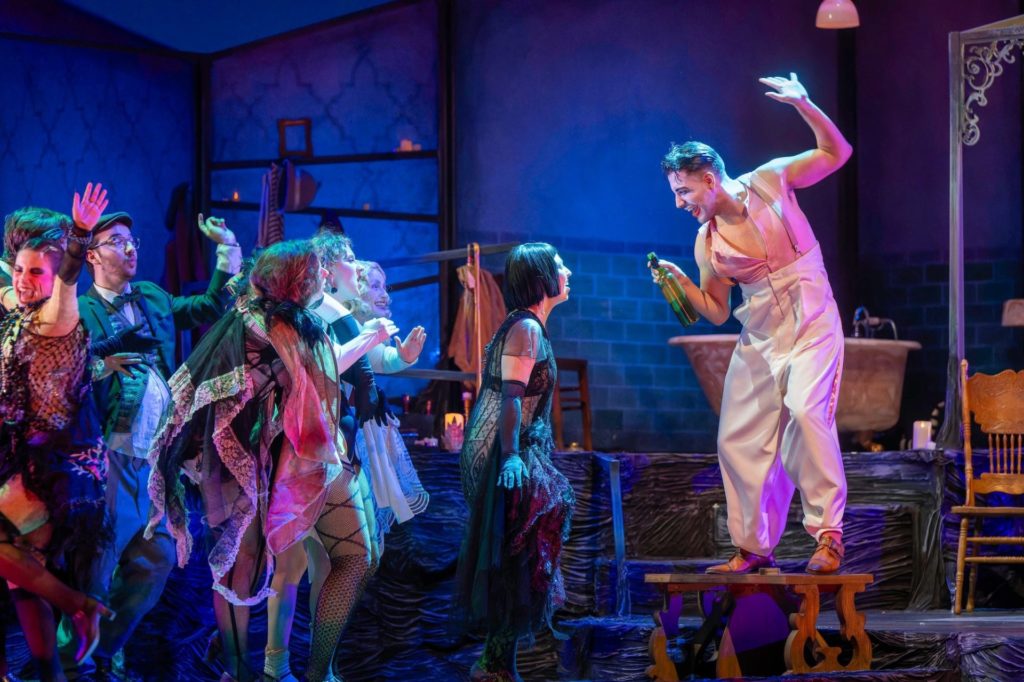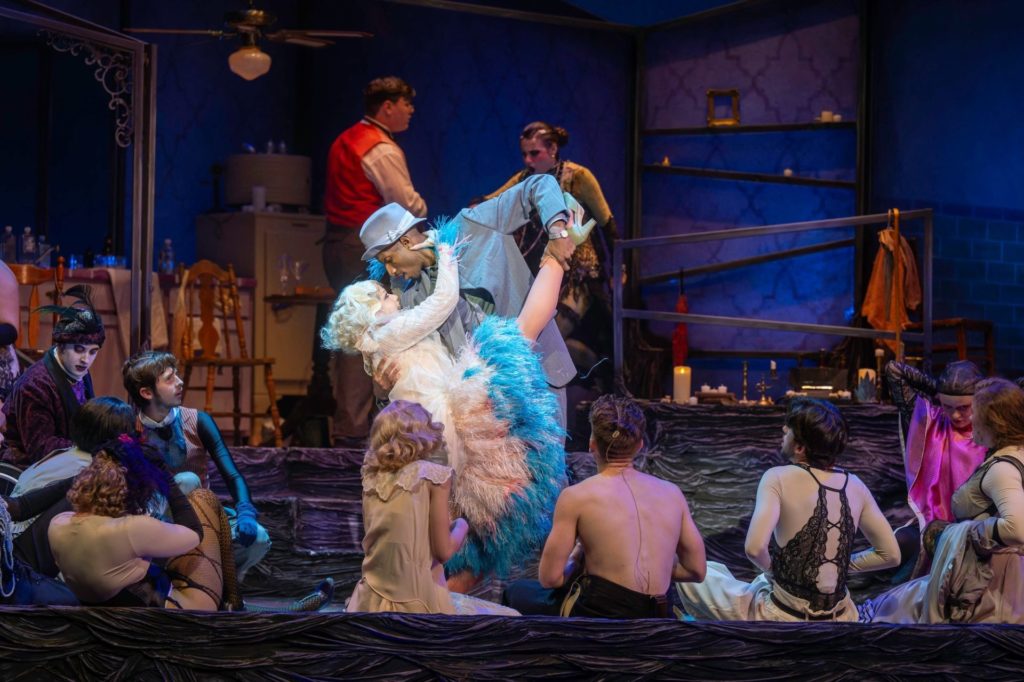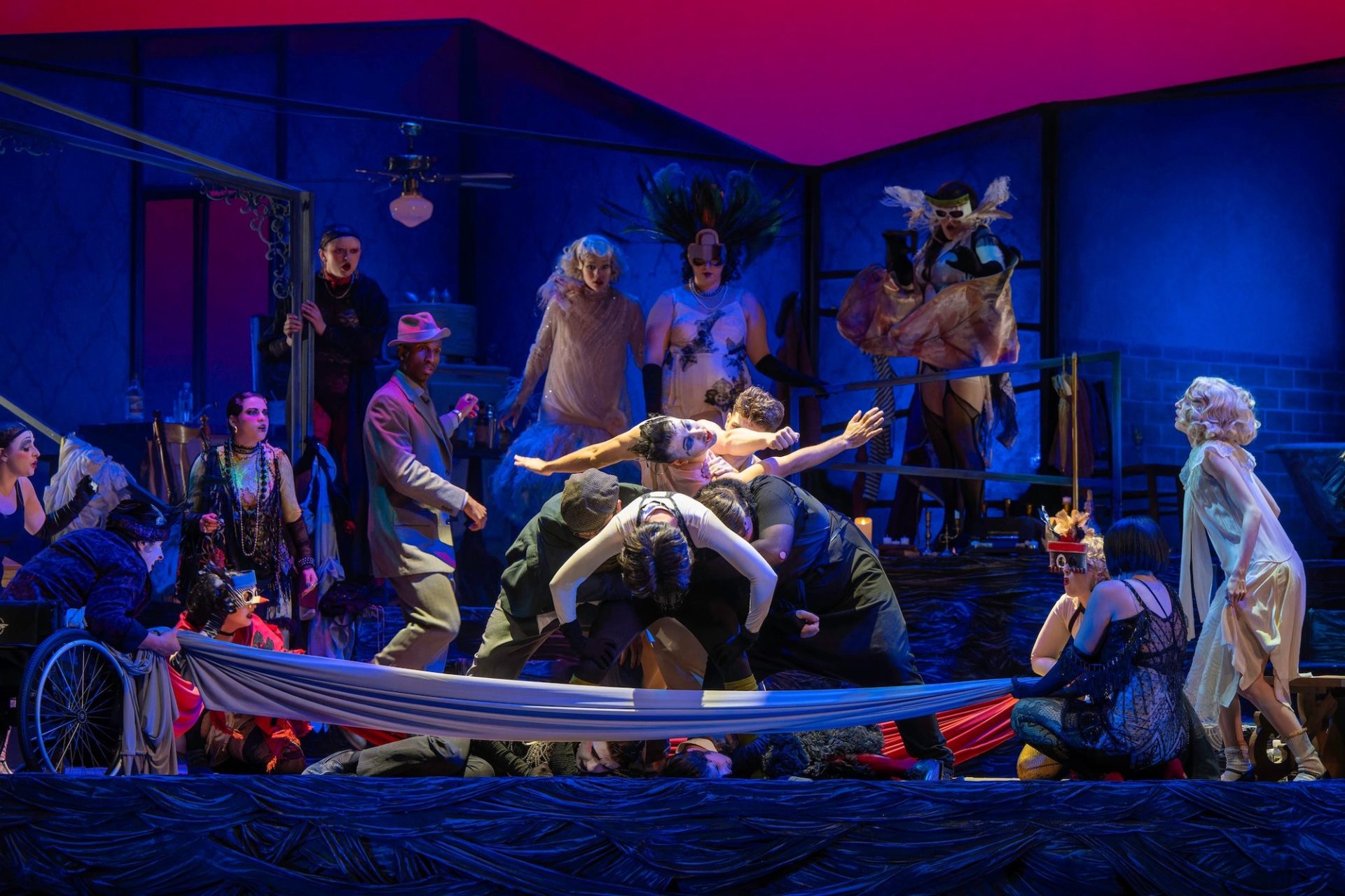On the evening of November 7th, I had the pleasure of heading over to the Krannert Center for the Performing Arts and seeing a production of Andrew Lippa’s musical The Wild Party, put together by the Lyric Theatre series of productions. This particular production was directed by Danny Yoerges and Rachel Rizzuto, with three performances in all. Set in 1920s New Orleans during the height of Prohibition, the musical dwells on the nature of desire. Amid all the debauchery and partying, we see characters struggling to name what they truly want, with one character boldly stating, “Everyone wants something.”
I jumped at the chance to go see this production, since I’ve long had an interest in the 1920s. However, I didn’t realize this was a musical until right before I went to see the show. I often have mixed feelings about musicals. Indeed, folks seem to either love them or hate them. That said, I ended up really loving this show. (I’m starting to think I should just embrace musicals once and for all, but that’s a subject for another article!) The story centers on the characters of Queenie and Burrs, two decadent lovers entangled in a contentious and often abusive relationship. In a bid to one-up her violent lover, Queenie decides that she and Burrs should host a party, where she can find a man to pursue her and put Burrs on edge. She finds such a man in the enigmatic Mr. Black. However, she ends up genuinely falling for him.

The majority of the performances within the play were by theatre students, and their work really shines. Of the students, Frida Guerra as Queenie, Charlotte Bergel as Kate, and Mahel Childress as Madeleine really stood out. Indeed, Childress’s performance of “An Old Fashioned Love Story” was a noteworthy highlight for me — a funny, tongue-in-cheek song about finding a little bit of Sapphic romance. However, my favorite performer of the evening was Héctor Camacho-Salazar as Burrs. With a background in opera, Camacho-Salazar brings not only his powerful voice to the character, but also a distinct charisma and impeccable stage presence, perfect for the role of the complicated and vile Burrs.
The production itself was also very well done. I’m always fascinated by the use of space in theatre, and how good set design can take a production to the next level. This musical offered a very interesting use of the stage, with just enough scenery to allow us audience members to fill in the blanks. What we did see on stage was just enough to remind us of the indulgences of the characters, while not tipping over into unrealistic opulence. Moreover, the costumes especially stood out, keeping us grounded in the time period, while also offering us a hint of something peculiar and even phantasmagorical. Amid the colorful silk robes, fishnet stockings, and outlandish face paint, it’s easy to forget we’re supposed to be in a real place like New Orleans, and not the depraved depths of hell — and that’s perfect.

The play depicts a push-and-pull among the central characters, with Queenie trying to decide between Burrs and Mr. Black. In the latter, she finds kindness and acceptance, yet she can’t decide whether she likes the thrill of Burrs’s anger and their tempestuous relationship, or if she wants to leave him once and for all. Burrs, meanwhile, can’t seem to decide if he wants to throttle Queenie or kiss her. In between them is Mr. Black, who sees these conflicting desires as the false dichotomies that they truly are. A recurring refrain that he sings is a description of Queenie, describing her as alternatively “innocent” and “used.” He’s able to both pinpoint and discard the “virgin/whore” dichotomy, and see the complex person that Queenie truly is. In seeing her, he sees all of them clearly, no longer archetypes, just sad and lonely people.

It’s interesting that Mr. Black is the only character that doesn’t seem to want anything. When he makes his first appearance and everyone is offering him drinks, he consistently declines. It’s at this point that he’s told that everyone wants something. However, he refrains from making a decision. He certainly desires Queenie, yet his desire for her relies on her desire to be wanted. In other words, he respects her boundary. When the love triangle eventually comes to a head, however, it’s interesting that Mr. Black is the one to take decisive action.
I’m glad I had the opportunity to see this musical production at KCPA, and to see the talent of University of Illinois students showcased, whether they were show-stopping performers or costume designers. I’ll be sure to keep an eye out for more shows to go see, and to perhaps revisit my mixed feelings about musicals, in general.








